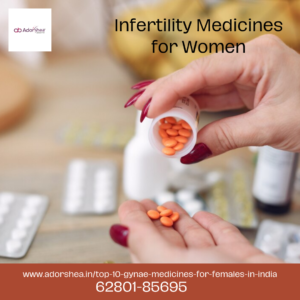Today, we’re going to embark on a journey to discover easy and natural ways to keep our hormones, especially a special one called “Estradiol,” in tip-top shape. Whether you’re curious about hormones or just want to know how to support a healthy body, this blog is your friendly guide. So, let’s dive in!
1. Colorful Foods for a Happy Hormone Dance:
Eating a rainbow of fruits and veggies isn’t just fun; it’s great for your hormones too! Berries, apples, and colorful veggies like broccoli bring a burst of goodness to support our friend, Estradiol.
2. Dance and Move Your Body:
Imagine your hormones having a little dance party inside you! Jumping, dancing, or playing your favorite sport helps keep your hormones, including Estradiol, in a happy and balanced mood.
3. Sunshine Vitamin (Hello, Vitamin D!):
Let the sunshine in! Spending some time outdoors gives you a dose of Vitamin D, a super helper for hormonal health. It’s like a sunny hug for your body and Estradiol.
4. Whole Grains – Friends for Life:
Foods like oats, brown rice, and whole wheat are like superheroes for your hormones. They provide the energy your body needs to keep everything, including Estradiol, working smoothly.

5. Superhero Seeds – Chia and Flax:
Tiny but mighty! Chia and flaxseeds are like little superheroes for hormonal balance. Sprinkle them on your cereal or yogurt, and watch them work their magic for Estradiol.
6. Water – The Body’s Bestie:
Stay hydrated, little friends! Water is like a superhero sidekick for hormones. It helps Estradiol and other hormones do their jobs properly. So, don’t forget to sip, sip, sip!
7. Happy Fishy Fats – Omega-3s:
Fish like salmon and trout are rich in Omega-3 fatty acids. These friendly fats are like a special treat for Estradiol, keeping it happy and healthy.
8. Sweet Dreams for Happy Hormones:
Sleep is like a magical potion for your hormones. Make sure you get enough rest, and your hormones, including Estradiol, will thank you with a big smile.
9. Stress-Busting Hobbies:
Picture stress as a grumpy monster. Hobbies like drawing, reading, or playing music are like superheroes that chase the stress monster away, giving a boost to your friend Estradiol.
10. Laugh Out Loud – Seriously!
Laughter is the best medicine, they say. It’s also fantastic for your hormones, including Estradiol. So, watch a funny movie, tell silly jokes, and let the giggles begin!
11. Mindful Breathing – Super Relaxation:
Take a moment to breathe deeply. It’s like giving a calming hug to your hormones, especially Estradiol. Close your eyes, take a deep breath, and feel the calmness.
12. Say Hello to Herbal Teas:
Herbal teas like chamomile or peppermint are like cozy blankets for your hormones. They help your body relax, supporting a happy balance for Estradiol.
13. Balanced Meals for a Balanced You:
Imagine your plate as a rainbow. Include veggies, proteins, and carbs for a balanced meal. This harmony makes sure your hormones, like Estradiol, stay in sync.
14. Fruits for the Win – Especially Berries:
Berries are like tiny power-ups for your hormones. Blueberries, strawberries, and raspberries are full of goodness that supports the health of hormones, including Estradiol.
15. Talk and Share – A Healthy Release:
Sometimes, talking about your feelings is like opening a window for your emotions to fly away. Whether with a friend or family, sharing your thoughts supports a happy environment for Estradiol.
16. Friendship with Fermented Foods:
Foods like yogurt, kefir, and sauerkraut are like friendly helpers for your tummy and hormones. They contain probiotics, the good bacteria that support a happy environment for Estradiol.
17. Go Nuts for Healthy Hormones:
Nuts, like almonds and walnuts, are like tiny power snacks for your hormones. They’re packed with nutrients that keep your body, and Estradiol, in good spirits.
18. Mindful Meditation – Peaceful Hormones:
Just like a calm sea, meditation helps create a peaceful space for your hormones to do their job, including Estradiol. Find a quiet spot, sit comfortably, and let the calmness flow.
19. Berrylicious Smoothies – A Hormone Delight:
Blend up a hormone-loving smoothie with your favorite berries, yogurt, and a splash of milk. It’s not just tasty; it’s a treat for Estradiol too!
20. Dance to Your Favorite Tunes:
Turn up the music and let your body groove! Dancing is not just fun; it’s a fantastic way to keep your hormones, especially Estradiol, in a happy rhythm.
21. Create a Hormone-Boosting Routine:
Imagine a magical routine that includes healthy meals, exercise, and relaxation. Creating a daily routine is like a roadmap for your hormones, ensuring Estradiol has a smooth journey.
22. Herbal Aromatherapy – Calming Scents:
Essential oils like lavender and chamomile are like sweet lullabies for your hormones. Aromatherapy can create a calming atmosphere that supports a happy balance for Estradiol.
23. Connect with Nature – Nature’s Healing Touch:
Spending time outdoors, surrounded by trees and fresh air, is like a refreshing spa day for your hormones. Nature has a way of bringing joy and balance, supporting Estradiol’s well-being.
24. Mindful Tech Time – A Digital Detox:
Give your eyes and mind a break from screens. Less screen time means less stress, creating a positive space for your hormones, including Estradiol, to thrive.
25. Gratitude Journal – Positivity Boost:
Writing down things you’re thankful for is like planting seeds of joy. A gratitude journal can help create a positive mindset, supporting a happy environment for hormones like Estradiol.
Conclusion:
And there you have it, our hormone-friendly adventure! Supporting healthy Estradiol levels is like taking care of a little friend inside you. By embracing these simple and fun tips, you’re on your way to a happy and balanced hormonal journey. So, go ahead, try these out, and let your hormones dance with joy!










